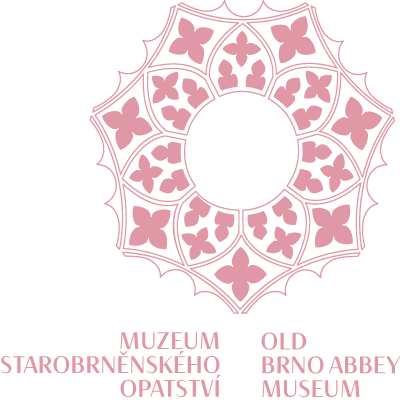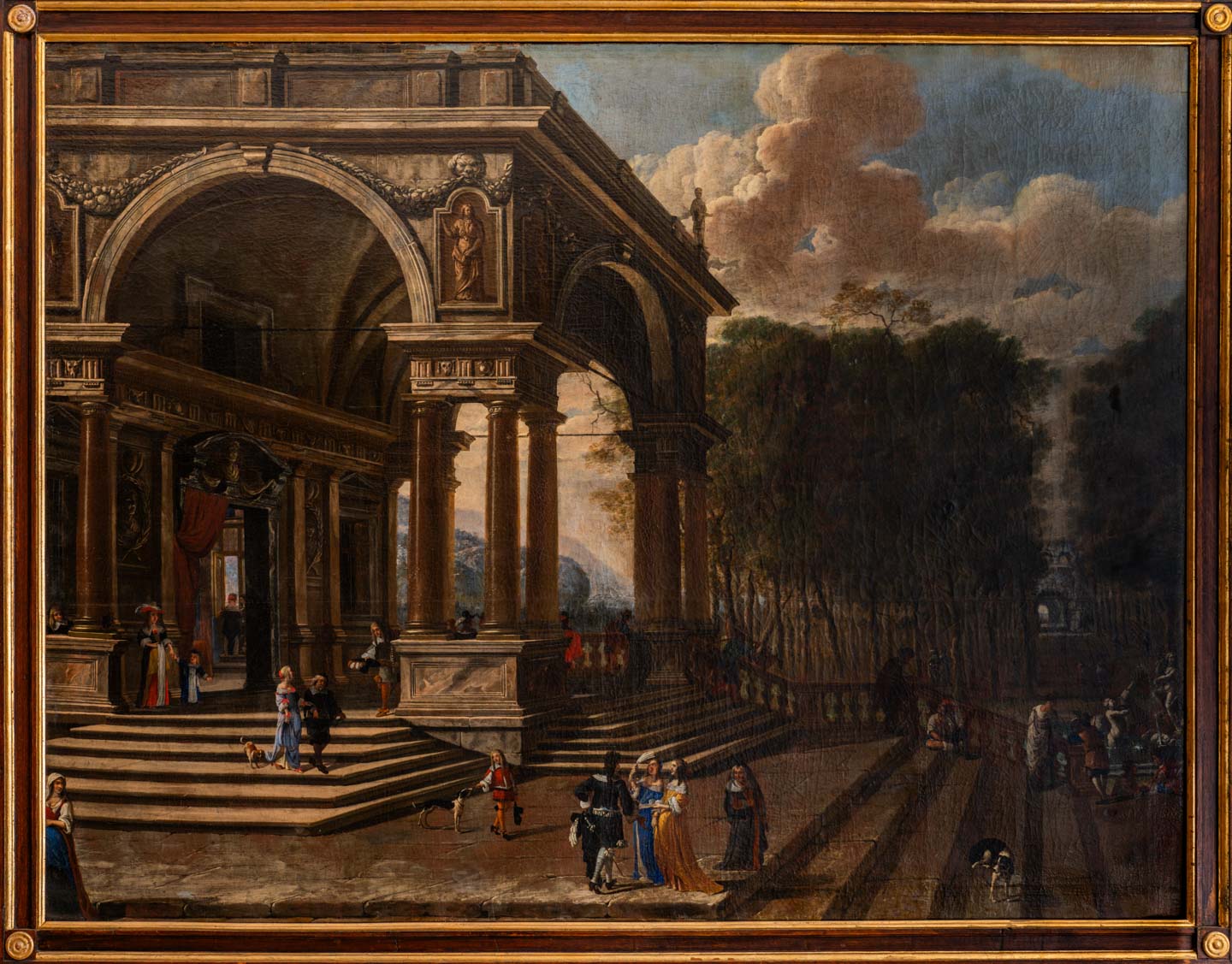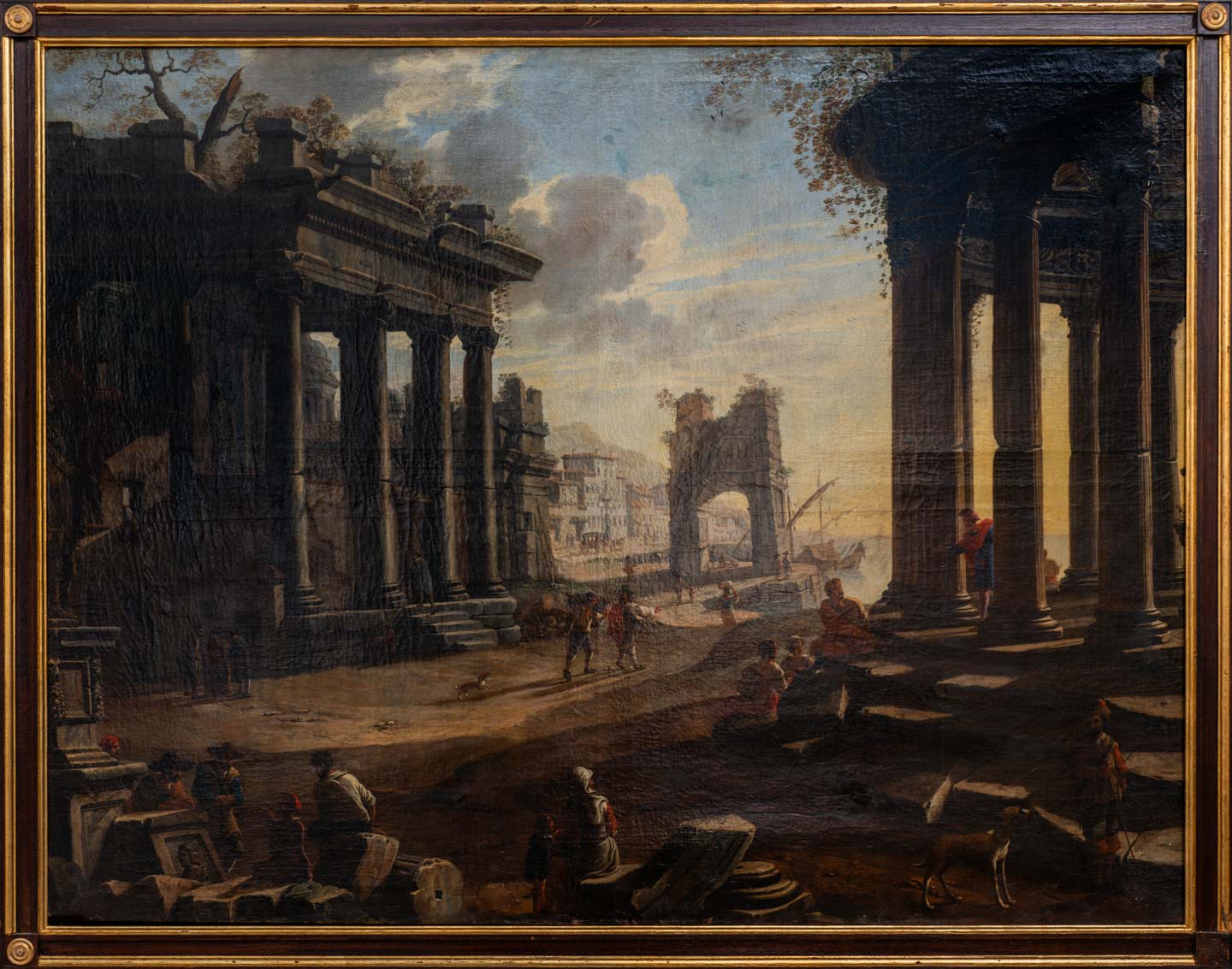Harbour with ancient architecture and Landscape with a summer palace
Frans Geffels (1625-1694) | 1662 | oil on canvas | 149 x 193 cm
The renowned painter, architect, printmaker and creator of ephemeral architecture, Frans Greffels was trained in his native Antwerp in the workshop of Daniel Middler, who was an accomplished painter, printmaker and publisher. Greffels became a master in the local Guild of St. Luke between 1645/1646. He often worked outside his homeland and in 1659 was given the prestigious post of prefetto delle fabbriche at the court of Charles II Gonzaga, Duke of Mantua, where he put his versatile talents to good use, combining the duties of official court painter, architect and set designer for celebrations, theatrical performances and funeral festivities (he excelled particularly in the construction of sets and decorations). He remained loyal to the Gonzaga family and Mantua for over 30 years. However, he also worked outside of Mantua, especially in Vienna, where the leading clients of his work included those from the imperial court. He created his works directly for the monarch, but also for the top Catholic clergy and the aristocratic elite. He is famous for his architectural realisations, fresco paintings and canvases with historical subjects, military scenes, genre scenes, as well as portraits. By the 1760s and 1770s he was already an established and sought-after artist in the city on the Danube. His first contacts were mediated by the Empress Eleonora Magdalena Gonzaga. He was involved in the design of many operas; for example, he collaborated with the theatre designer Lodovico Burnacini on the preparation of the opera L’Almonte, performed on the occasion of the birthday of Emperor Leopold I. His canvases The Harbour with Ancient Architecture and Landscape with Summerhouse are also connected with his Viennese activities. Idyllic scenes depicting illusory landscapes were among the most sought-after types of painting in the Baroque period. The first painting depicts a Renaissance summer palace with a figural stagiage. Scenes of life are enriched by gallant scenes and vistas of composed landscapes with romanticised ancient ruins. The ruins of the ancient buildings dominate the second painting, which, however, masterfully captures the everyday life of the colourful society that inhabits the harbour. The vibrant city can be seen in the background and a mountain range on the horizon. Geffels was a master of perspective views, which he was able to fully apply here. The work with light and aerial perspective also adds dynamism to the painting.


